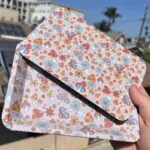sterling silver and gold-filled jewellery are high quality, durable alternatives to solid gold that are also hypoallergenic. With the right care, they can last for years.
However, it is important to remember that these types of jewelry can tarnish over time due to contact with body oils and chemicals. You can avoid this by storing your jewelry in a sealed bag when not in use.
What is Sterling Silver?
Sterling silver is a precious metal alloy that has a luminous white color and can be made into beautiful jewelry. It is often combined with other metals, such as copper, to create a more durable material.
It’s also hypoallergenic, and does not react with your skin like other metals. However, it is susceptible to tarnishing over time and should be cleaned frequently.
In some countries, sterling silver products are marked with a stamp that discloses the percentage of silver used to make the piece. This is an important distinction to know so that you can identify the genuine article.
Sterling silver is a good choice for those who want an item that is durable, hypoallergenic, and sustainable. It is also less expensive than solid gold, making it a great option for those on a budget. It is easy to clean and maintain. It also holds its value well over time.
Why is Gold-Filled Jewelry Better?
If you’re thinking of purchasing a new piece of jewelry, you may be wondering which type is best. Choosing the right kind of metal will affect how durable and long-lasting your jewelry is.
Gold-filled is a type of metal that contains a very thick layer of actual gold, usually over 100 times thicker than gold-plated pieces. It also resists tarnishing, which is why many people prefer it over vermeil and gold-plated jewelry.
The color of gold-filled jewelry varies from item to item because different finishing processes are used by manufacturers. Most items are close to the industry standard “Hamilton” color, but some are more yellow, tawny or darker in hue.
The color also varies depending on the gold alloys used. The karat of the gold and the mix of base metals will also determine its tone. For example, mixing copper with gold creates a darker yellow gold.
What is the Difference Between Gold-Filled and Gold-Plated Jewelry?
Gold-filled jewelry is made of a solid layer of gold (typically at least 5% of the total weight) mechanically bonded to a base metal like sterling silver or brass. It’s often more affordable than solid gold jewelry and looks virtually indistinguishable from it.
Gold filled pieces are made of a thicker layer of gold alloy than gold-plated jewelry, which makes them more durable and less likely to chip or break. Moreover, gold-filled jewelry is more hypoallergenic than gold-plated, which means it’s easier for people who are sensitive to nickel to wear.
Generally, gold-filled jewelry will last for several decades with proper care. However, it’s important to note that gold-filled jewelry can tarnish if exposed to harsh chemicals or water, and it may need to be replated at some point. Luckily, it’s usually pretty easy to clean and restore tarnished gold-filled jewelry!
How to Care for Sterling Silver and Gold-Filled Jewelry
If you want to make your jewellery last longer, it’s important to understand how to care for each type of metal. Sterling silver, gold filled and gold vermeil all require care to maintain their luster.
To prevent tarnish, you can clean your sterling silver pieces regularly. You can do this using a polishing cloth or wet cleaning with warm water and a little bit of mild dishwashing liquid.
You should also avoid harsh chemicals such as chlorine bleach, denatured alcohol, turpentine, acetone and ammonia, which can wear off the stones in your jewellery.
Gold-filled and gold vermeil jewelry are not tarnish resistant like solid gold so it is important to avoid wearing them in the shower or in chlorinated pools and hot tubs.
You can keep your jewellery tarnish free by wearing it frequently and gently cleaning it with a soft cotton cloth or a silver polishing cloth. Store it properly in a ziplock baggie or jewelry pouch away from direct sunlight and exposure to chemicals.






Comments closed.